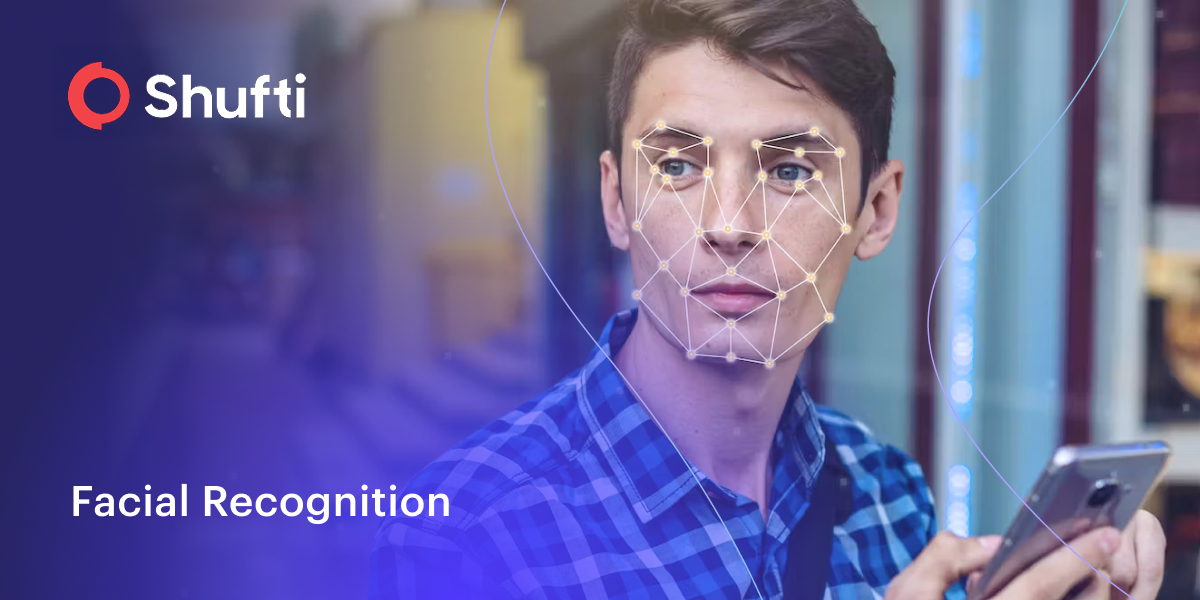Facial Recognition in the Workplace: 2025 Benefits, Risks & Compliance Blueprint

Facial recognition has matured from an emerging novelty into a mission‑critical control for secure, efficient and contact‑free workplaces. By 2028 the global market will more than double to USD 13.4 billion, growing at 16.3 % CAGR, driven by hybrid work, stricter compliance demands and accelerating AI innovation.
Yet 2024‑25 also usher in the world’s first horizontal AI law (EU AI Act – Regulation EU 2024/1689), the UK’s Data Protection & Digital Information (DPDI) Bill, and a wave of US state biometric statutes, fundamentally reshaping how employers may collect, process and store facial data. This blueprint summarises:
- Current technology options (2D v 3D + liveness)
- Updated business gains & quantifiable ROI
- New‑era legal duties & ethical guard‑rails
- Shufti analytics from 110 m+ verifications and 1.3 m fraud attacks blocked
- A best‑practice deployment roadmap aligned with Google E‑E‑A‑T and responsible‑AI principles
1. Technology Landscape 2025
Facial recognition hardware and algorithms have evolved rapidly over the past 18 months. This section maps the current state of play, spotlighting the sensors, architectures and standards that now define enterprise‑grade solutions.
1.1 2D vs 3D Recognition
| Feature | 2D | 3D & Depth‑Aware |
| Hardware | Standard RGB camera | IR or structured‑light sensor |
| Anti‑spoof Accuracy | Moderate; vulnerable to print/video attacks | >98 % with liveness |
| Cost | Low | Falling—entry devices ≈ $120 |
1.2 Emerging Enhancements
- Depth‑based liveness & skin‑texture mapping defeat sophisticated deepfakes.
- Edge AI chips (e.g., NPU‑equipped access points) cut latency below 250 ms without sending images to cloud.
- ISO/IEC 38570:2024 provides a standard for biometric data lifecycle governance.
2. Business Value in 2025
Beyond tighter security, organisations are realising measurable financial and operational returns from context‑aware biometrics. We quantify the top levers driving board‑level investment decisions in 2024‑25.
- Zero‑friction Access Control – sub‑1‑second door unlocks reduce queue time 30 % and eliminate lost card replacements.
- Automated Time & Attendance – early adopters reported £234 k annual payroll leakage savings (Shufti client benchmark, 2024).
- Safety & Incident Response – real‑time watch‑list alerts cut unauthorised entry by 88 % in manufacturing sites.
- HR Productivity Uplift – Shufti analytics show HR teams reclaim 6.5 hours/week formerly spent on manual roll‑calls.
3. Risk & Compliance Spotlight
The regulatory bar for workplace biometrics is rising fast. This section unpacks the legal, ethical and reputational considerations employers must master before rollout.
3.1 Regulatory Heat Map 2025
| Region | Key Statute (Status → In‑force) | Workplace Impact |
| EU | EU AI Act (2024/1689) → high‑risk obligations from Aug 2025 | Mandatory risk assessments; bans emotion‑scoring of staff |
| UK | DPDI Bill (Commons 2024 → Lords 2025) | New ICO biometric code & DPIA triggers |
| US | Illinois BIPA (amended 2024), Texas SB 2490 (effective Sep 2025), Colorado AI Act (Jan 2026) | Consent, data‑retention limits, bias audits |
| ISO | ISO/IEC 38570:2024 | Global best‑practice reference |
Non‑compliance fines now reach €35 m or 7 % global turnover under the AI Act. Employers therefore must embed privacy‑by‑design, maintain algorithmic transparency and conduct yearly bias testing.
3.2 Ethical & Technical Risks
- Bias & Discrimination – mitigate via diverse training data (>400 k faces across 180 countries) and ongoing TPR/FPR monitoring.
- Deepfake Attacks – deploy depth‑based liveness and presentation‑attack detection certified to ISO/IEC 30107‑3.
- Worker Trust – clear purpose limitation, opt‑outs, and on‑device processing where feasible.
4. Best‑Practice Implementation Roadmap
Successful facial recognition programmes follow a structured path from discovery to continuous optimisation. The roadmap below distils lessons learnt across hundreds of enterprise deployments.
| Phase | Milestone | Owner | Tip |
| 1. Discovery | DPIA & stakeholder workshop | DPO + HR + Facilities | Map data flows to meet AI Act Annex IV |
| 2. Vendor Selection | RFP including bias scorecards & SOC 2 Type II | Procurement | Ask for third‑party PAD tests ≥ ISO Level 2 |
| 3. Pilot & Benchmark | 4‑week proof of concept on volunteer group | IT + HR | Target FAR ≤ 0.1 %, FRR ≤ 1 % |
| 4. Policy & Training | Update privacy notice; create incident playbook | Legal | Incorporate local employee works‑council input |
| 5. Roll‑out & Monitor | Go‑live + quarterly audits | Security Ops | Use Shufti Anomaly Pulse for real‑time alerts |
5. Shufti Advantage
Not all vendors offer the same depth of global coverage, fraud defences and compliance tooling. Here’s what sets Shufti apart for enterprise environments.
- Global Trust Platform – 2,500+ document templates, 98.67 % median match‑rate.
- 3D Depth & Liveness – certified to ISO 30107‑3; 0.06 % false reject (2024 H2).
- Adaptive Fraud Firewall – blocked 1.3 m attacks in 2023; projected 1.6 m in 2024 (+23 %).
- Privacy Mesh – on‑device template encryption (FIPS 140‑3) ensuring GDPR/DPDI compliance.
Free ROI Snapshot – upload a month of access‑card logs and our engine models savings in under 24 hours.
6. Conclusion
Facial recognition is no longer experimental when deployed ethically, it delivers measurable security and productivity gains while aligning with 2025’s tougher AI governance. By following the roadmap above—and partnering with a certified provider such as Shufti organisations can harness biometrics with confidence and earn employee trust.
Frequently Asked Questions
Is facial recognition legal in the workplace?
Yes provided employers obtain informed consent, perform Data Protection Impact Assessments (DPIAs), and comply with regional laws such as the EU AI Act and Illinois BIPA.
Does facial recognition store whole images of employees?
Modern platforms convert faces into encrypted mathematical templates rather than retaining the raw photograph, greatly reducing privacy risk.
How accurate is facial recognition for diverse workforces?
Depth-aware algorithms trained on balanced global datasets achieve >98 % accuracy across age, gender and skin-tone groups; quarterly bias testing is recommended.
What happens if the system fails to recognise an employee?
Fallback options mobile QR codes, PIN pads or staffed security desks ensure zero lockouts while capturing the false-reject for tuning.
Can employees opt out?
Yes. Under GDPR, BIPA and similar statutes, staff must be offered a reasonable alternative authentication method and face no adverse action for opting out.










